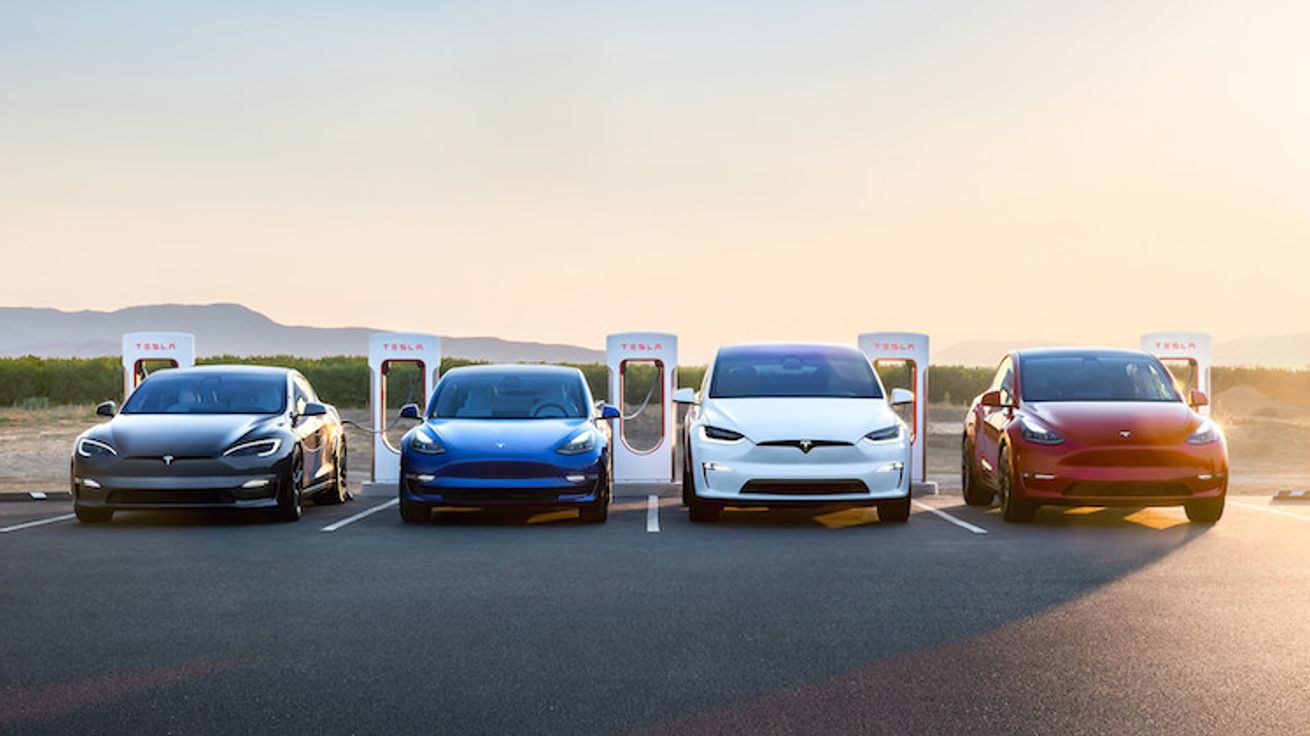4/15/2024
EV Charging Incentives Guide
Discover incentives and rebates available to offset the cost of installing a home EV charging station in this guide to electric vehicle charging incentives.

Peter Glenn
4/28/2023
Want to save money on a Tesla? Apply these EV tax credits, rebates, and incentives to a low-interest loan from EV Life and save big.

Kevin Favro

Teslas are by far the most popular electric vehicles in the industry today, controlling over 60% of the EV market. But despite their popularity, the company still needs to make pricing modifications in response to market changes to remain competitive. Recently, Tesla has been adjusting the pricing for many of its vehicles, with some models changing four times in just the last month. With so many price cuts and bumps, it can be hard to keep up.
The reason for the price changes is due to several factors, including shifts in demand and changes to federal rules regarding which electric vehicles qualify for tax credits. In January, the manufacturer announced price cuts to its lower-cost EVs, ranging from $3,000 to $13,000, up to 20% off the sticker price, depending on the model. Then, in February, Tesla announced slight increases to its Model Y Long Range and Model Y Performance pricing, raising the cost by 2% and 2.7%, respectively, in response to an increase in demand.
Most of these price changes are directly related to new rules introduced in the Inflation Reduction Act of 2022, which updated EV tax credits to include electric pickup trucks, SUVs, and vans with sticker prices up to $80,000 and new electric cars, sedans, and wagons priced up to $55,000. Qualifying for the tax credit depends on several factors, including the vehicle's MSRP, its final assembly location, the sourcing location of the battery components and critical minerals used by automakers, and your modified adjusted gross income (AGI). With their new price tags, the Model Y and Model 3 now qualify for the federal EV tax credit, except for the Tesla Model 3 Standard Range, which had its tax credit lowered to $3,750 on April 18, 2023, due to battery component sourcing.
Trims | Current Price | Federal EV tax credit | State & Local Incentives |
|---|---|---|---|
Model Y (all trims) | $43,990 | $7,500 | |
Model 3 (Performance only) | $38,990 | $7,500 | |
Model X (Base trim only) | $79,990 | $7,500 | |
Model S | $87,490 | $0 |
Each federal and state EV incentive has its own complex set of requirements that vary for each program, vehicle model, and driver. And with all the new updates to EV incentive guidelines and vehicle pricing changes, it can be difficult to know how much you might be eligible to save on your EV purchase through existing tax credits, grants, rebates, and other programs, especially if you’re in the market for a Tesla.
That’s why EV Life has put together this guide for prospective Tesla buyers to help clarify which programs certain models are eligible for, so you can maximize your savings. In addition to the federal EV tax credit, we’ll examine the various state rebates and grants available to California drivers who qualify. We’ll also show you how to take immediate advantage and get the most financing potential out of your tax credits and rebates by pre-qualifying for an EV Climate Loan through EV Life.
Launched in 2019, the Model Y serves as a middle ground between the Model 3 and the Model X. The compact SUV seats five and is a great option for drivers looking for a lower-priced alternative to the Model X.
Current price: from $43,990
Range: 283 miles
EV Incentives eligibility:
Released in 2016 as an affordable option to the Model S, the four-door Model 3 sedan has since dropped further in price, becoming Tesla’s most affordable option to date and also their best-selling model.
Current starting price: from $38,990
Range: 272 miles
EV Incentives eligibility:
Released in 2015, the Model X is Tesla’s most spacious offering, with versions of the Model X capable of seating up to seven people. These futuristic-looking SUVs feature DeLorean-style falcon wing rear doors, touchscreen navigation, and multiple seating configurations available. The Model X comes with three years of free Supercharging.
Current price: from $79,990
Range: 351 miles
EV Incentives eligibility:
Originally launched in 2012, the Tesla Model S is a luxury vehicle with a lot of power under the hood. The latest Model S is all-wheel-drive, and its newest version, the Plaid, boasts tri-motor propulsion that can achieve 0-60 acceleration in under two seconds. Because of its higher price tag, no versions of the Model S EVs currently qualify for the federal electric vehicle tax credit, which has a limit of $55,000 for electric cars, sedans, and wagons. The Model S comes with three years of free Supercharging.
Current starting price: $87,490
Range: 405 miles
EV Incentives eligibility:
EV Life offers a smarter EV financing solution. Here’s how it works when you apply for an EV Climate Loan with EV Life:
Don’t navigate the complex and ever-shifting EV incentive process alone. Financing with EV Life guarantees the best prices and the lowest rates on your EV, saving the planet while saving your pocketbook.
Want to see how much you could save on your Tesla? Pre-Qualify Now
4/15/2024
Discover incentives and rebates available to offset the cost of installing a home EV charging station in this guide to electric vehicle charging incentives.

Peter Glenn
4/11/2024
Learn how states are balancing EV incentives, fees, and taxes. Explore which states offer tax credits, impose higher registration fees, or take a mixed approach.

Peter Glenn
4/8/2024
Used EVs are cheaper than ever, but traditional auto dealers remain wary of selling them. A new breed of dealers and lenders are seizing the opportunity. Jeff St. John interviews EV Life Co-CEO Peter Glenn.

Canary Media